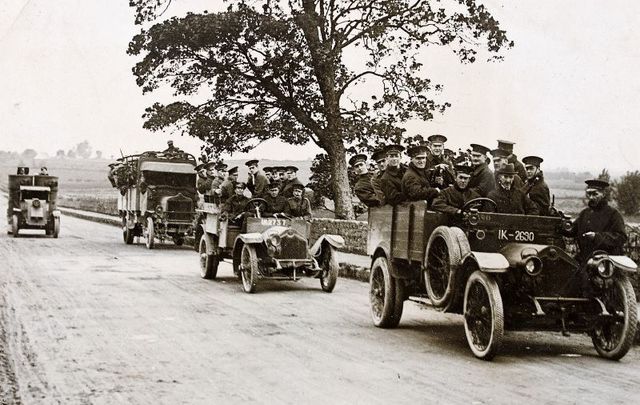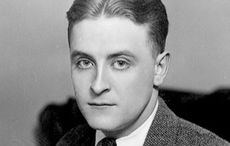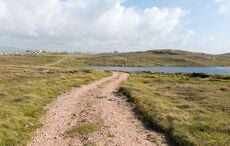During the Irish War of Independence, over 180 British soldiers were killed in action while 103 died in accidental shootings. 46 took their own lives and four were killed by their fellow soldier.
Corporal Charles Cleaver Yates
The first British soldier to be killed by a fellow soldier during the Irish War of Independence was Corporal Charles Cleaver Yates.
Born in Leicestershire in 1896, Yates worked as a shoemaker before enlisting in the Royal Marines at the start of World War I in 1914. In 1918, Yates was posted to HMS Coventry on the Atlantic Ocean. In June 1920, he was posted to Ballyvaughan Coastguard Station in Co Clare where he was murdered a month later.
On the 7th of July 1920, Yates was shot by fellow Marine Cecil George Redvers Helmor. On that summer morning, Head Constable James Mooney in Ballyvaughan RIC Barracks responded to a shooting in the coastguard station. When he arrived there he found Yates lying on his bed with blood pouring from a bullet wound in his neck while a hysterical Helmor was being restrained by other Marines.
Helmor was born in Reading in 1900 and worked as a hotel porter before joining the Royal Marines in 1918. He was posted to HMS Coventry where he and Yates became close friends but, when they were posted to Ballyvaughan, the friendship soured.
An argument broke out between Helmor and Yates on that July morning in the coastguard station which resulted in Helmor aiming his pistol at Yates and shooting him. Yates was removed to Cork military hospital where he died 17 days later. Yates was buried in London Road Cemetery.
19-year-old Helmor was court-martialled and sentenced to death, but it was commuted to penal servitude which was spent at Maidstone. The circumstances behind Helmor's motives were kept from the public. Yates had made unwanted romantic advances on Helmor who responded with murder.
By 1939, Helmor was free and living in Gloucestershire. He moved around a lot and in the 1950s he settled in Nenagh Co Tipperary where he died in 1974.
Sergeant Albert Sweeney and Sergeant Thomas Downton
Sergeant Albert Sweeney was born in Salford in 1887. Married with three children, he enlisted in the British Army in 1914. In 1919 he was posted to Portobello Barracks with the King's Own Regiment.
Sergeant Thomas Downton was also part of the King's Own Regiment and stationed in Portobello Barracks. He was born in 1890 in Worcestor and had served with the Worcestor Regiment in India. In 1919 he was deployed to Dublin.
Both Downton and Sweeney would meet their deaths in Portobello Barracks at the hands of their fellow soldier George Henry Pollington.
Born in Norfolk in 1892, Pollington enlisted in the British Army in 1915 and fought in WWI. He was highly decorated but suffered from shell shock and was discharged in 1918. Pollington was allowed to re-enlist a year later and he was sent to Portobello Barracks.
In Dublin, Pollington was courting a local lass called Mary Fitzpatrick. On Saturday night September 19th, 1920, Pollington snuck Mary into Portobello Barracks. During the night, the couple argued into the early hours of Sunday morning. Pollington was drinking heavily and by dawn that Sunday morning he chased Mary in a drunken rage with a rifle around the barracks. She fled into the mess room for the safety of other soldiers gathered there, including Sweeney and Downton.
Sweeney stepped in front of the terrified woman to shield her from Pollington who aimed his rifle and fired. Sweeney was killed instantly. Downton sprang into action and tried to tackle Pollington but he too was shot dead. Mary ran for an open window and climbed out of it to safety.
It took several other soldiers to restrain Pollington. He was court-martialled and sentenced to death which was commuted to life imprisonment. The case was briefly mentioned in newspapers before it was totally suppressed by the British authorities.
Pollington was released in 1927. He would later settle down and marry in England where he lived until his death in 1958.
Read more
Gunner Alexander Morrison
On the 14th of April 1921, Gunner Alexander Morrison was shot dead at Baldonnel Aerodrome in Dublin. Born in England in 1901, Morrison was murdered by fellow soldier Bombardier Sidney Ince following an argument at the airfield.
The two men had been feuding for weeks over a girl. The female in question appeared at Ince's court-martial where she claimed he had harassed her at a dance and Morrison stepped in to help her. From then on the two became enemies and often argued at their base in Baldonnel. While on guard at the airfield on that Spring night in 1921 the two soldiers entered into an argument. Both men drew their guns and Ince was the first one to fire. Morrison was killed instantly and Ince in a fit of panic then turned the gun on himself but his suicide attempt failed.
At his court-martial, Ince claimed insanity. It was backed up by his father who stated insanity ran rampant in their family. Ince was sentenced to life imprisonment but was released some years later and disappeared.
Gunner Morrison was buried in Seafield Cemetery in Edinburgh. He was the last British soldier murdered by a fellow soldier in Ireland during the War of Independence.

Love Irish history? Share your favorite stories with other history buffs in the IrishCentral History Facebook group.
This article was submitted to the IrishCentral contributors network by a member of the global Irish community. To become an IrishCentral contributor click here.




Comments